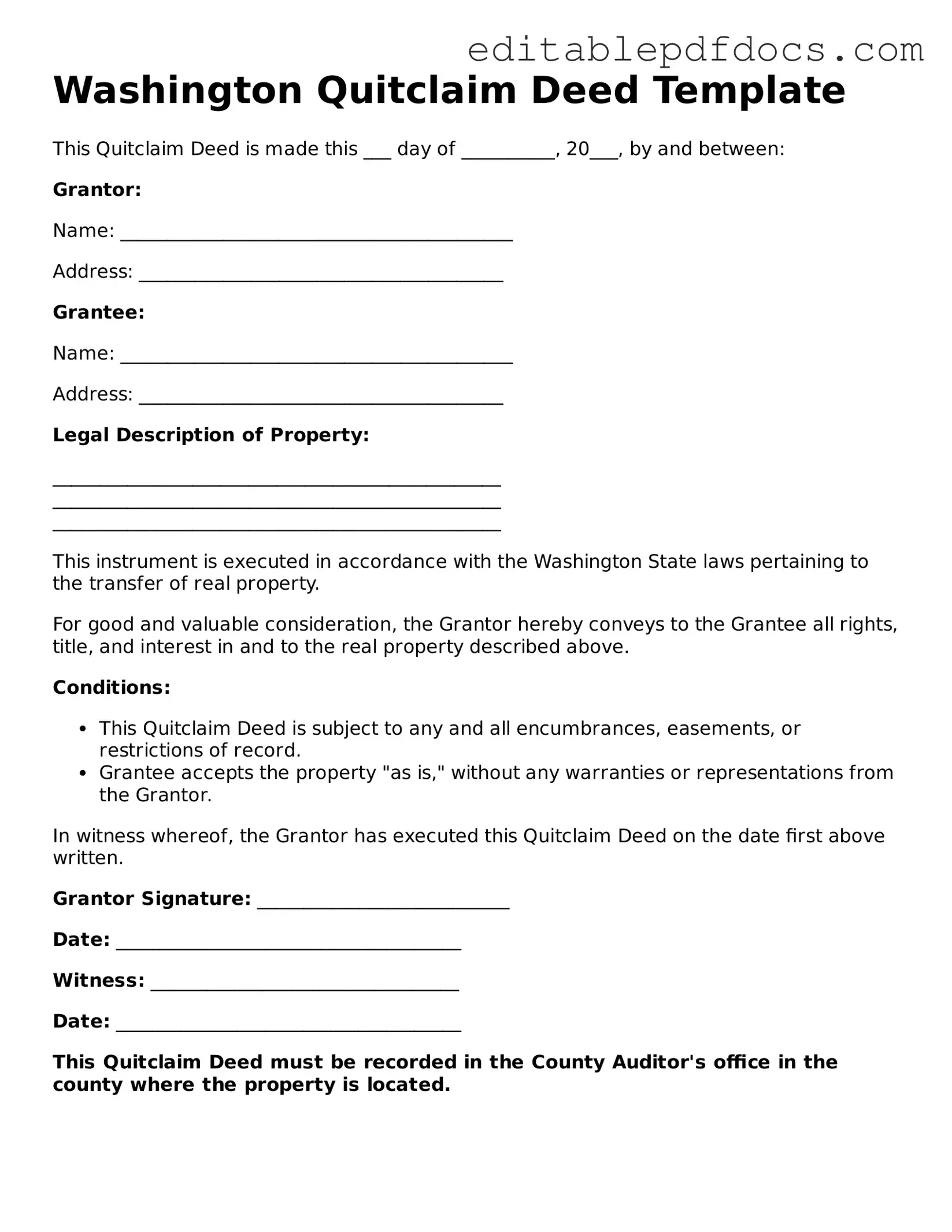In the realm of real estate transactions, the Washington Quitclaim Deed form serves as a crucial instrument for transferring property rights. This legal document allows an individual, known as the grantor, to relinquish any claim they may have to a property, thereby enabling another party, the grantee, to assume ownership. Unlike other types of deeds, the quitclaim deed does not guarantee that the grantor holds clear title to the property; rather, it conveys whatever interest the grantor possesses, if any. This characteristic makes it particularly useful in situations such as divorce settlements, estate transfers, or when property is given as a gift among family members. While the form itself is relatively straightforward, it must be executed with care, as it requires the grantor’s signature, the identification of the property, and often the notarization of the document. Additionally, understanding the implications of using a quitclaim deed is essential, as it can affect the rights of both the grantor and the grantee. By exploring the intricacies of the Washington Quitclaim Deed form, individuals can better navigate their property transactions and ensure that their interests are adequately protected.
